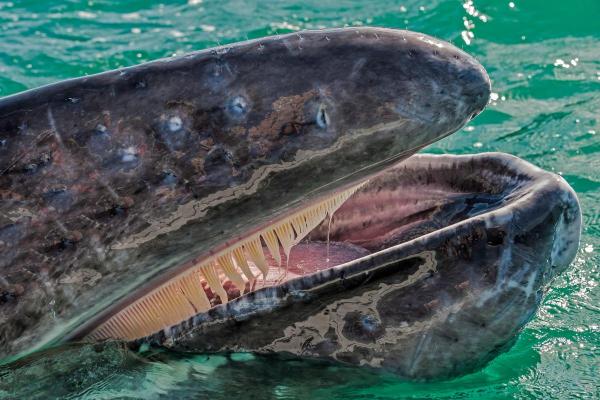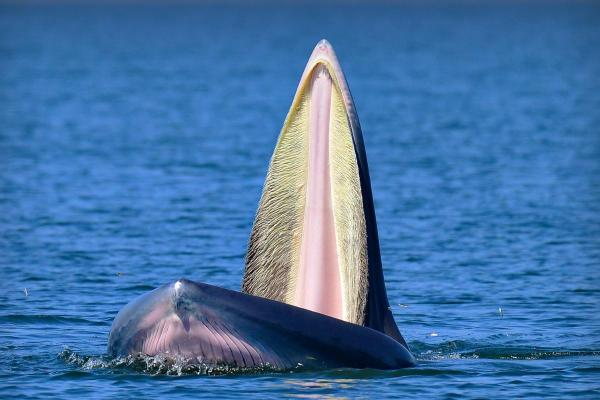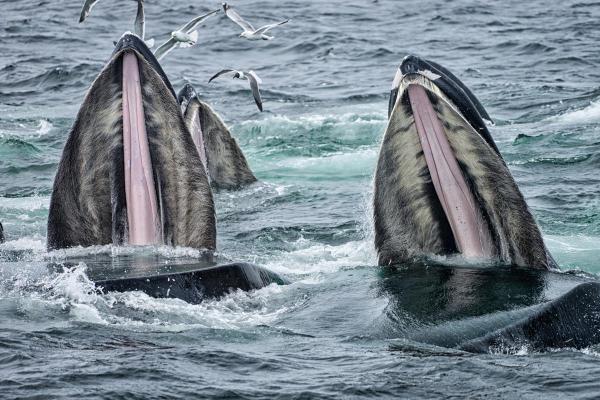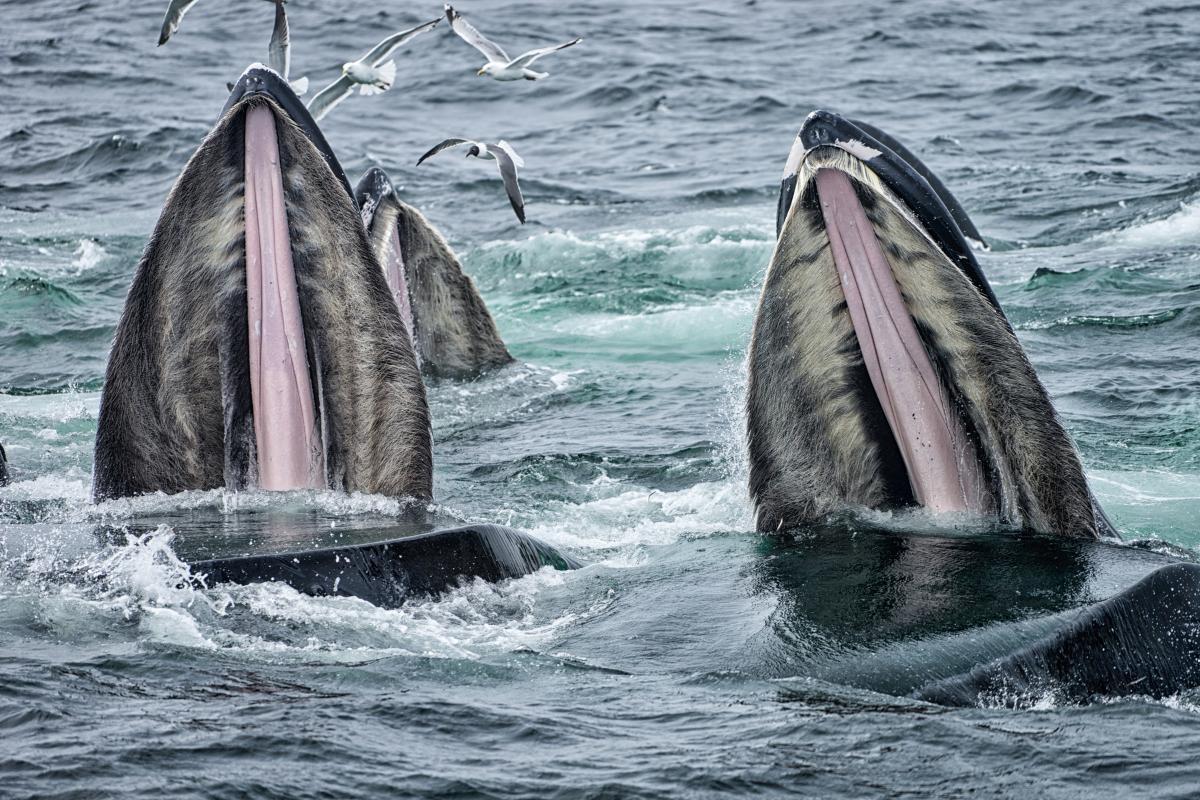Do All Whales Have Teeth?


Whales, the colossal inhabitants of the world's oceans, are among the most captivating and enigmatic creatures on our planet. Whales are classified into two distinct groups: mysticetes and toothed whales. Mysticetes, often referred to as baleen whales, possess baleen instead of teeth in their adult stage. In contrast, toothed whales, while sometimes mistakenly labeled as whales, do indeed have teeth within their oral cavities.
To delve deeper into the unique dental structures of these magnificent marine beings, join us in exploring the secrets of whales in the following article by thedailyECO. We'll uncover the truth about whether whales have teeth or not, shedding light on their remarkable adaptations and lifestyles.
Do whales have teeth?
Yes, whales do have teeth, but it depends on the specific type of whale. Whales are categorized into two primary suborders: toothed whales, scientifically known as odontocetes, and baleen whales, referred to as mysticetes. These suborders are distinguished not only by their feeding adaptations but also by their dental characteristics.
Odontocetes
Toothed whales, as the name suggests, have teeth. These teeth can vary in number, shape, and size depending on the species, but they are generally sharp and conical.
Some prominent examples of toothed whales include the Common Dolphin (Delphinus delphis), which boasts around 80-100 sharp teeth. The Bottlenose Dolphin (Tursiops truncatus) typically has a variable number of teeth, ranging from 18 to 28 in each jaw. The Harbor Porpoise (Phocoena phocoena) has up to 36 small, spade-shaped teeth in each jaw.
Mysticetes
In contrast, baleen whales do not have teeth. Instead, they have baleen plates made of keratin, the same material found in human hair and nails. These baleen plates act like a filter, allowing baleen whales to capture and feed on small prey such as krill and small fish. These whales rely on their baleen plates to sift through large volumes of water and extract the food they need to sustain their massive size.
Examples of baleen whales include the Humpback Whale (Megaptera novaeangliae), Blue Whale (Balaenoptera musculus), and Gray Whale (Eschrichtius robustus).
For a thorough exploration of what whale vomit is and its intriguing uses, read our informative article on the topic.

Why don't whales have teeth?
Whales, specifically baleen whales or mysticetes, do not have teeth as an adaptation to their feeding habits.
When baleen whales feed, they employ a technique known as filter-feeding. It begins with them opening their enormous mouths and taking in vast quantities of water, along with the tiny organisms it contains, such as krill and small fish. Once the water is inside their mouth, the baleen plates come into action.
The baleen plates, composed of keratin, the same material found in human hair and nails, form a dense and flexible structure within the whale's mouth. This structure acts as a natural sieve. As the whale expels the water through the baleen, these plates trap and retain the prey inside their mouth, while allowing the water to escape. The trapped prey, now separated from the water, is then swallowed by the whale.
This filtering process is incredibly efficient and allows baleen whales to capture substantial quantities of prey in a single mouthful. It's particularly advantageous when prey is dispersed or aggregated in large numbers. By capitalizing on this unique adaptation, baleen whales can secure the nourishment they need to thrive in their oceanic habitats, making them highly successful and resilient marine creatures.
In contrast, toothed whales, or odontocetes, have teeth adapted for grasping and consuming larger prey, such as fish and squid. So, whether a whale has teeth or baleen depends on its specific feeding strategy and ecological niche within the marine environment.
For a deeper understanding of how whales manage to sleep without drowning, delve into our other article on the topic.

Differences between baleen whales and toothed whales
We've examined the distinctions between baleen whales and toothed whales regarding their diet and dental structure. However, these aren't the sole distinctions between these two groups. Let's delve into additional differences below for a more comprehensive understanding:
Feeding habits
- Baleen whales: these whales are primarily filter feeders. They take in large mouthfuls of water and use their baleen plates to filter out and capture small prey from the water.
- Toothed whales: toothed whales are active predators. They hunt and capture their prey using their teeth, which are adapted for catching a wide range of prey, from fish to squid.
Size and shape
- Baleen whales: they are typically larger and have a more streamlined body shape. They include some of the largest animals on Earth, such as the blue whale.
- Toothed whales: they come in various sizes, and their body shapes can vary widely. Some, like dolphins, are relatively small, while others, like sperm whales, are large and robust.
Social structure
- Baleen whales: they often exhibit more solitary or loosely organized social structures, although some species may form temporary groups during migration or feeding.
- Toothed whales: they are known for their complex social structures, often forming close-knit pods or groups that work together for hunting and protection.
Echolocation
- Baleen whales: they are not known to use echolocation extensively.
- Toothed whales: they rely heavily on echolocation, using sound waves to navigate, communicate, and locate prey in their underwater environments.
To gain a comprehensive grasp of the distinctions between False Killer Whales and Orcas, explore our in-depth article on the subject.
If you want to read similar articles to Do All Whales Have Teeth?, we recommend you visit our Facts about animals category.
- González, LM “Humans and cetaceans: identities and contradictions.”
- Hickman, C.P., Roberts, L.S., & Larson, A. (2000). "Integrated principles of zoology".







